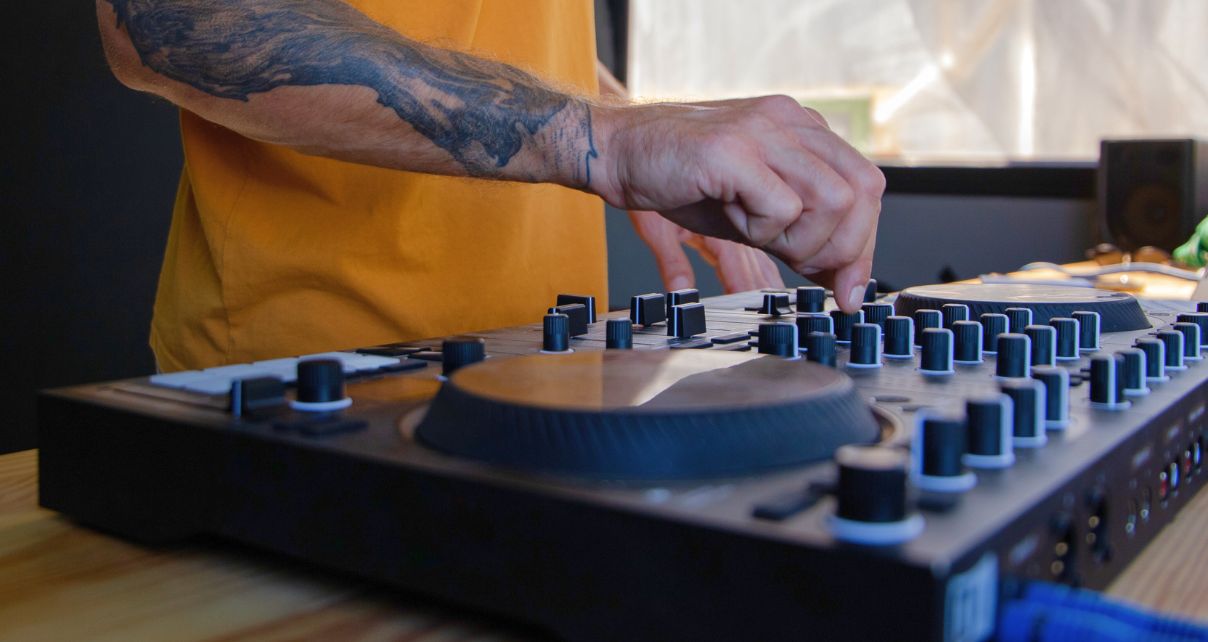
Welcome to Lighting: A Guide For DJs. Over the next few weeks we’ll give you all you need to know to understand and use lighting. Whether you’re a resident DJ just wanting to know how the hell to control that vacant lighting desk in the corner, or at the other end of the scale, if you’re considering spending big on a whole rig of your own, no matter: If you’re a beginner with this stuff, this is the guide for you.
Each instalment has an article with an accompanying video. The written guide is for you to go back and refer to in case you need to check something; the videos explain many things in much more detail, as obviously working with lights can better be shown on video than on “paper”. This first part is a little introduction to lights, looking at two things: Why lights? And: What makes a light “intelligent”?
Why lights?
Now, “why lights?” is actually quite simple. Nobody wants to dance in a room with bright white light and plain walls. In the worse-case scenario it could well feel like partying in a hospital! On the other hand, if it is too dark or foggy, nobody can even see who they are dancing with – and that is counter-productive too. So the first thing is to create an amount of light that is suitable for people to enjoy themselves.
The second part of lighting is realising that light can control moods. Now, as DJs we already do this with our music, but humans are also a very visual creatures, so reinforcing our music with effective lighting can transform a simple hot cocoa by putting some cream and cherries on top – and who doesn’t love that? Of course control over the lights is the key here, and we will go through the steps necessary in the following parts, from how to control the lights, up to which lights we should use, and where/when.
Mobile DJs of course will see immediately why using effective lighting will give them an edge over DJs not doing so. Especially for weddings and even more so for corporate events, they know that good lighting is the key to getting high profile jobs. But many club DJs, especially if they score a residency early on, shy away from learning about lights and think they should simply let the VJ deal with it.

But let us be honest, many small clubs or bars do not have a VJ. They possibly had a light guy put in the lights, and program some scenes or shows, and then they operate it simply by turning it on and putting it on autorun or sound-to-light. But even if there is a VJ in the house, knowing about light will give you a definite edge over other DJs.
Why? Well, that’s simple: If you know about lights and how to use them, talking to the VJ becomes much easier. You can talk him through your set and he can cue up specific lightings or even program some scenes to your setlist. If there is no VJ and the venue owner directs you to a DMX mixer he knows nothing about, and you start to tweak it (because you can) it will make you look extremely professional and he will more likely hire you again. So this is why it pays to have a grounding in lights. Now let’s move on to our second question…
What are intelligent lights?
Now conventional lights are simple lamps, one could say. For show lighting they often came in the form of what are called “cans”, where you shove a colour filter in front of them, basically to make them colourful. But in order to operate them, aka turn them on and off at will or even dim them to different levels, you needed things called “dimmer packs”. Now this is all a huge hassle, and thanks to LED technology and intelligent lights, is rapidly becoming a thing of the past.
Many light people still recommend beginners to go with cans and dimmer packs for starters, but what can I say? I ditched my turntables long ago and do not miss them, DJs can easily learn on controllers these days, same with lights. Some intelligent LED lights will get you started off with much greater effect, cheaper, lighter, and more fun than the old way. Now, intelligent lights have – as the name suggests – some intelligence built in. This can be from a simple thing like remote on/off and dimming, up to changing the RGB colours, moving the light or putting in effects, strobing etc.

To make all of this this work, these lights usually have different modes built in. The most simple one is a static mode, aka you switch the light on and if it is RGB (meaning it can display all colours), you can change the colour to your liking and then leave it be. A step further is a mode often called “standalone” mode, “auto” mode or “program” mode. In this mode the light will change things (eg its colour, or move in some way,…) according to a built-in program, automatically. Often you can change the speed of the changes, but not much more.
The downside of this type of mode is obvious. You cannot go to every light all the time and change speed, so ultimately the light show will not be in sync to the music. This is why most intelligent lights also have a so-called “sound-to-light” mode or “sound-operated” mode. For this, the light has a built-in microphone that will sync the sound-to-light program to the music beats (I show you this in the video with some music, so it is easy to see).
And lastly, most intelligent lights have a “DMX” mode. In this mode, the light can be controlled via a “DMX controller”. We will not get into much further detail on this here, because will talk about the basics of DMX in the next chapter of this guide.
Video
So here’s the video. I hope you enjoy it; I’ve tried to move slowly as some of this stuff can be very complicated if you are not used to the terms used by lighting people! So I apologise if I use them on occasion, and do feel free to ask questions below or on the forum if something is unclear.
Next time…
Stay tuned for part 2, where as I say we will demystify DMX, and you’ll see it is not as complicated as many would have you believe.
• A veteran DJ and Digital DJ Tips’s resident PA and lighting specialist, Terry can also be found moderating the Digital DJ Tips Forum.
Check out the other parts in this series:
Do you own your own lighting rig? Is this something you’re considering buying for your set-up? Is there a VJ or lighting technician where you DJ, or do you end up doing some of it yourself as well as DJing? Share your thoughts and ask Terry questions in the comments.








